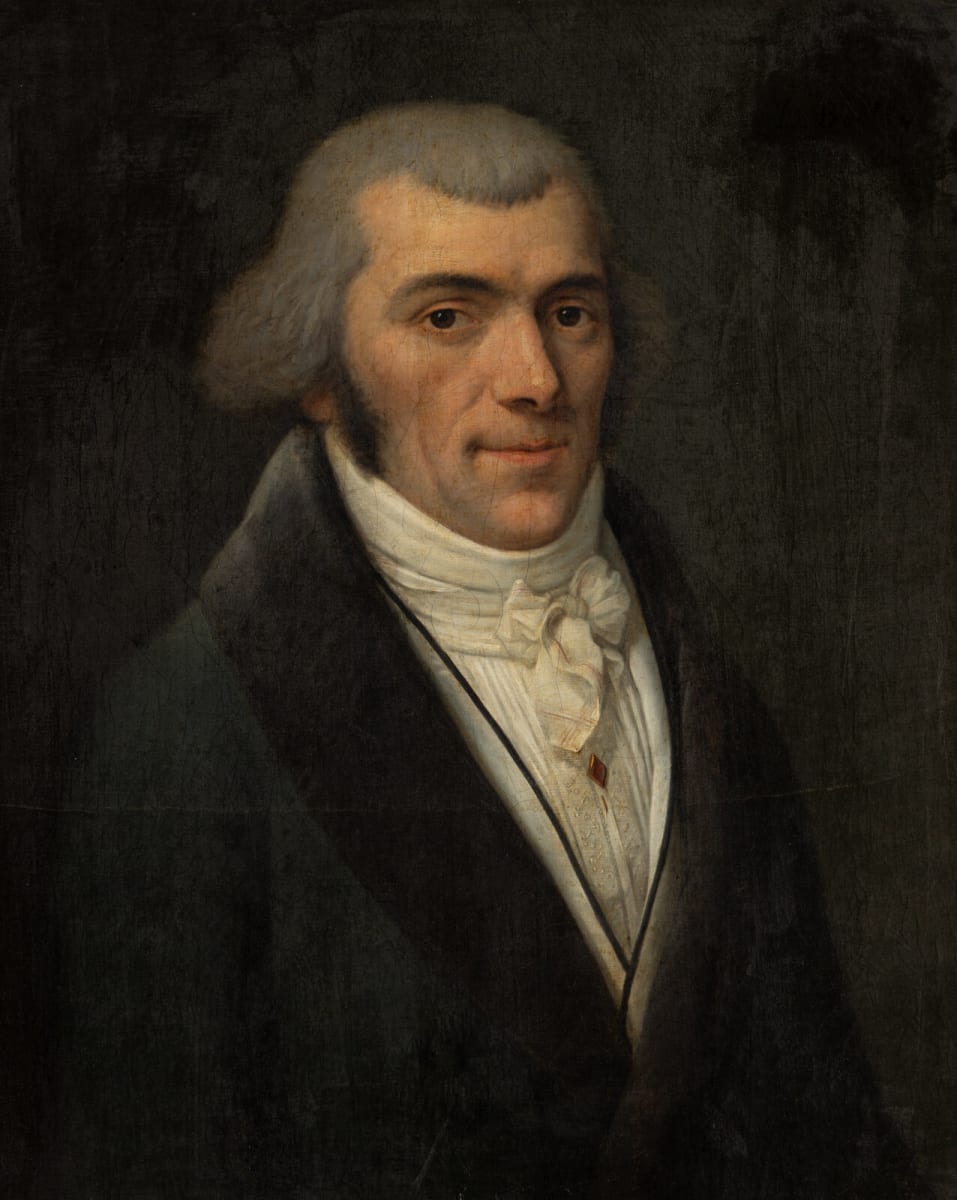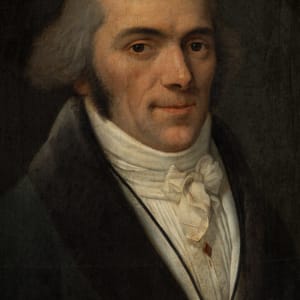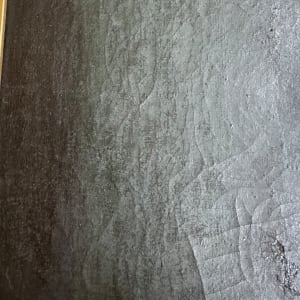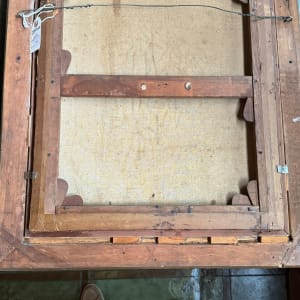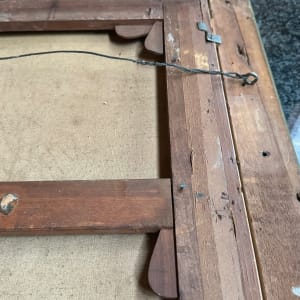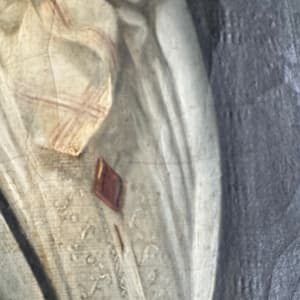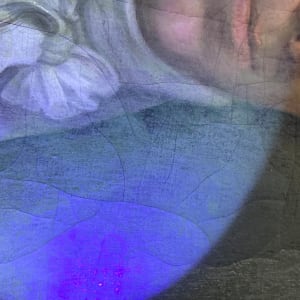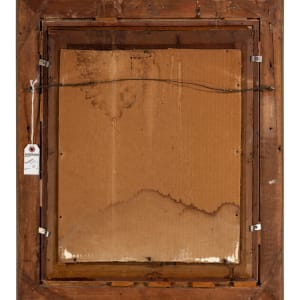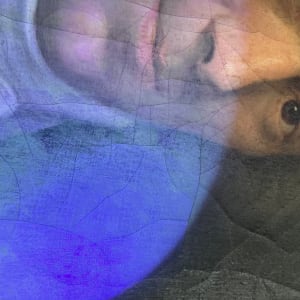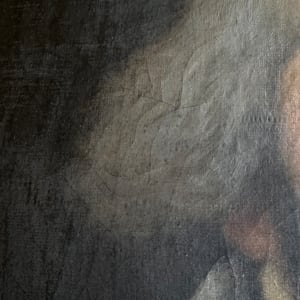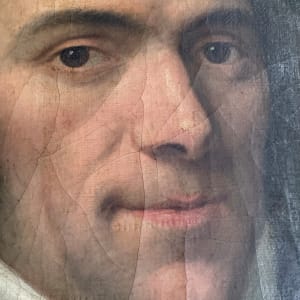- Louis-Leopold Boilly
- “ Portrait of a Gentleman” "The Statesman", 1792
- Oil On Canvas
- 22 x 18.25 in (55.88 x 46.36 cm)
- Framed: 28.25 x 24 x 3 in (71.76 x 60.96 x 7.62 cm)
- Signature: Upper right
- Inv: 1152 Von Schmidt Famil...
Artist: Louis-Leopold Boilly x
This Portrait -exemplifies Boilly's strong characterization of the sitters as individuals, and followed in his usual sober range of colors. The Sitter of this piece is believed to be Louis Nicolas Vauquelin however there are no records substantiating this.
Louis-Léopold Boilly was born in 1761 in the village of La Bassée, near Arras, the son of a woodcarver. From 1775 the boy lived in Douai with a relative, a prior of the Augustine order. It is not known who gave Boilly his first training. A very early practice of portrait painting, partly self-taught, seems to have launched him into his profession. By 1779 he was at work in Arras, busy with portraits.
In 1785 he moved to Paris, where two years later he married Marie-Madeleine Desligne, the daughter of a merchant of Arras. His family portraits, conceived as intimate domestic scenes, attracted the attention of a provincial noble of literary bent, Calvet de La Palun, who commissioned him to paint a series of narrative genre subjects based on texts furnished by himself.
From 1791 onward Boilly regularly exhibited portraits and genre scenes at the Paris Salons. When private patronage dwindled after the outbreak of the Revolution, he sought to reach a wider popular audience by painting boudoir scenes, of mildly licentious character, to be reproduced in quantity by the printmakers. A lukewarm supporter of the Revolution, he was denounced in 1794 to the Société Républicaine des Arts by a fellow artist, the Jacobin zealot Jean-Baptiste Wicar (1762-1834), for having painted "obscene works revolting to republican morality." The denunciation was forwarded to Robespierre's Comité de Salut Publique. At the height of the Terror this was a life-threatening accusation, of which Boilly managed to clear himself by painting Triumph of Marat (Musée des Beaux-Arts, Lille), which appeased the revolutionary thought-police. His wife had meanwhile succumbed to the anxiety caused by these alarms. Remarried in 1795, Boilly benefited from the pacification resulting from the fall of Robespierre.
The resurgence of luxury, corruption, and elegance in the years that followed brought him new patrons and supplied him with subjects for the kind of social observation that suited his temperament--amused, uncensorious, vividly pictorial, and often spiced with mild bawdiness and a touch of caricature. Besides episodes from the everyday of urban life (Queueing for Milk, Salon of 1796), he observed street crowds reacting to national events
(Departure of the Conscripts of 1807, Salon of í8o8, Musée Carnavalet, Paris), sampled sidewalk entertaimllents (The Boulevard Prestidigitator, 1806), and surveyed the city's thriving prostitution (The Galleries of the Palais Royal, 1809, Musée Carnavalet, Paris).
In his choice of subjects, he had an immediate French predecessor in Philibert-Louis Debucourt (1755-1832) with whose colored prints Promenade de la Galerie du Palais Royal (1787) and La Promenade publique (1792) he was certainly familiar. Debucourt's scenes of fashionable outdoor sociability in turn derived from Thomas Rowlandson's (1757-1827) Vauxhall, a print of 1784.
In adapting these prototypes Boilly gave them a plainer middle-class aspect and treated them with a profusion of mundane detail that contemporaries criticized as "Dutch" and compared to the styles of Gerard Terborch II (1617-I68I), David Teniers II (1610-1690), and Gabriel Metsu (1629-1667). The factuality of his social and physical observation was, however, tempered by his invariable classicist embellishment of his young female figures, the hard distinctness of his colors, and the glassy smoothness of his brushwork.
Portraiture, having launched him on his career, remained to the end his most dependable source of income. His facility in executing small portraits rapidly and cheaply enabled him to be productive on an almost industrial scale, rivaling the output of the photographers of later generations. By 1828, well before the end of his career, he could claim to have painted more than five thousand portraits, each completed in about two hours. In searching for ways of capturing likenesses with speed, he tinkered with optical devices that, in turn, helped him to develop the illusionist techniques by which he brought off the spectacular feats of trompe-1'oeil still-life painting that astonished Salon audiences and irked the critics.
Portrait painting influenced his treatment of genre subjects. His Meeting of Artists in Isabey's Studio (Louvre), which won success at the Salon of 1798, and his Studio of a Sculptor (1804, Musée des Arts Décoratifs, Paris), exhibited in 1804 as Picture of a Family, arranged actual portraits to form imaginary genre situations. Conversely, when composing his crowded urban genres he gave them the appearance of animated group portraits. But the portraitlike figures that fill his genre scenes--the attractive child, the fashionable young woman, the portly elderly bourgeois, and the grim-visaged street tough--are in fact only stock types from a repertoire to which he constantly returned.
Boilly's work evolved very gradually from a classicizing Louis-XVI style to a French version of Biedermeier, always contemporary in subject matter and popular in tone but tending to mannerisms and repetitions that mitigated its underlying realism. Held in suspense by his contrary tendencies--to detailed surface realism on the one hand and embellishing stylization on the other--it underwent no radical changes: his later genre scenes, such as The Entrance to the Turkish Garden Café (Salon of 1812, private collection, Australia) or The Distribution of Wine and Food in the Champs-Elysées (Salon of 7822, Musée Carnavalet, Paris), still recall his work of the 1790s. Inevitably, they began to seem old-fashioned and by 1830 had entirely lost the flavor of modernity that had constituted their appeal.
Boilly last exhibited at the Salon in 1824. Among the works of his old age was a series of lithographs of comical facial expressions, Grimaces. In the spring of 1828 he sold his collection of Dutch, Flemish, and French paintings and decorative objects, as well as thirty-seven of his own paintings. The monarchy of Louis-Philippe awarded him the cross of the Legion of Honor. He died in 1845, aged eighty-four. [This is the artist's biography published in the NGA Systematic Catalogue]
Boilly has long been recognized as the most significant painter of everyday life in Napoleonic France, one whose portraits and genre scenes provide delightful illustrations of the period. In her book Susan Siegfried argues that Boilly's paintings should be read not just for their documentary detail but also for their wider cultural significance—for the light they shed on social and sexual tensions of the era.
According to Siegfried, Boilly viewed the Revolution not as a political event but as a force that redefined social attitudes and behavior. His paintings of street scenes contained a new middle-class imagery of modern life. Boilly avoided the straightforward narratives and focused composition of contemporary history painting, and there was a deliberate ambiguity in his paintings that reflected his own uneasy position within the middle class. His paintings also reveal his distinctive interest in spectatorship and the act of viewing, and Siegfried contends that his work represents a peculiarly modern politics of spectatorship and involves us in a self-conscious dialogue between picturing and viewing. In fact, says Siegfried, Boilly's representation of women and boys as highly eroticized objects raises important issues of gendered viewing. Boilly emerges in this innovative study as an intriguing figure who fashioned new pictorial formulas that appealed to connoisseurs of his era and of ours and whose works illuminate important aspects of life in France after the Revolution.
Thanks to the efforts of Susan L. Siegfried formerly research projects manager at the Getty Art History Information Program. Currently Susan L. Siegfried is Professor of Art History and Women's Studies at the University of Michigan. She is the author of The Art of Louis-Léopold Boilly: Modern Life in Napoleonic France, co-author of Staging Empire: Napoleon, Ingres, and David, and co-editor of Fingering Ingres.
- Subject Matter: Historical Portrait
- Collections: Von Schmidt Family Trust Historical Paintings Collection
